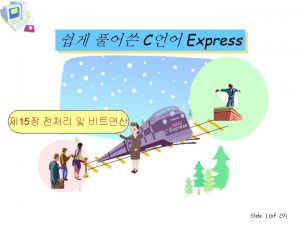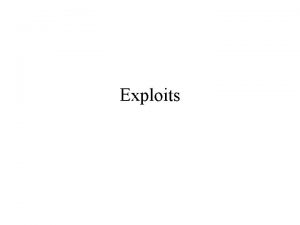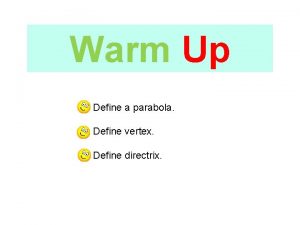WarmUp 1 2 3 4 Define the term












- Slides: 12

Warm-Up 1. 2. 3. 4. Define the term watershed. Identify and describe one factor that affects watersheds. If I want to grow a tomatoes in a container on my porch, what type of soil would you recommend I use? Describe one thing that humans do to affect the water table.

Ocean Currents and Density

Currents • Currents: Stream-like movements of water that occur at or near the surface of the ocean

Currents • Currents depend on 2 things – Temperature – Salinity • Saltiness!

Temperature • What changes the temperature of water? – In the polar regions, cold air chills the water molecules on the Earth’s surface • Molecules slow down and move closer together • Cold water sinks, which brings warmer water to the surface to repeat the process

Salinity • What causes the salinity of ocean water to change? – Ocean water freezes on the surface • Dissolved solids (like salt) are squeezed out of the ice as it forms • This increases the salinity of the ocean water below the ice

Salinity • What else causes the salinity of ocean water to change? – Surface water from the ocean evaporates – It leaves solids (like salt) behind, increasing salinity – Very common in warm climates

Density • Density has a huge impact on ocean currents – Hot water is less dense than cold water • Warm water floats on top of the cold water – This “turns over” the ocean • Some sections of the ocean under the surface warm up at different rates. This warm water will rise from the bottom of the ocean up to the top, mixing the waters

Density continued • Salt water is more dense than fresh water – Water from streams and rivers float when it enters into the ocean – Since humans are mostly freshwater, this is why we can easily float in the ocean

How currents move • Ocean currents move in 2 large circles over the globe—one in each hemisphere – At the Equator, water is warm, so it rises to the surface and moves towards the poles – As water starts to cool down, it sinks, and starts moving back towards the Equator • Overall, heat’s moved away from the Equator towards the poles • This cycle is important for bringing nutrients and oxygen to different parts of the ocean

Major Ocean Currents of the World

Effects of Currents • Because water has such a high heat capacity, coastal climates are generally moderate • Neither very hot or very cold – The water absorbs and moderates temperature fluctuations • In comparison, cities that are inland, away from the ocean have much greater temperature extremes























